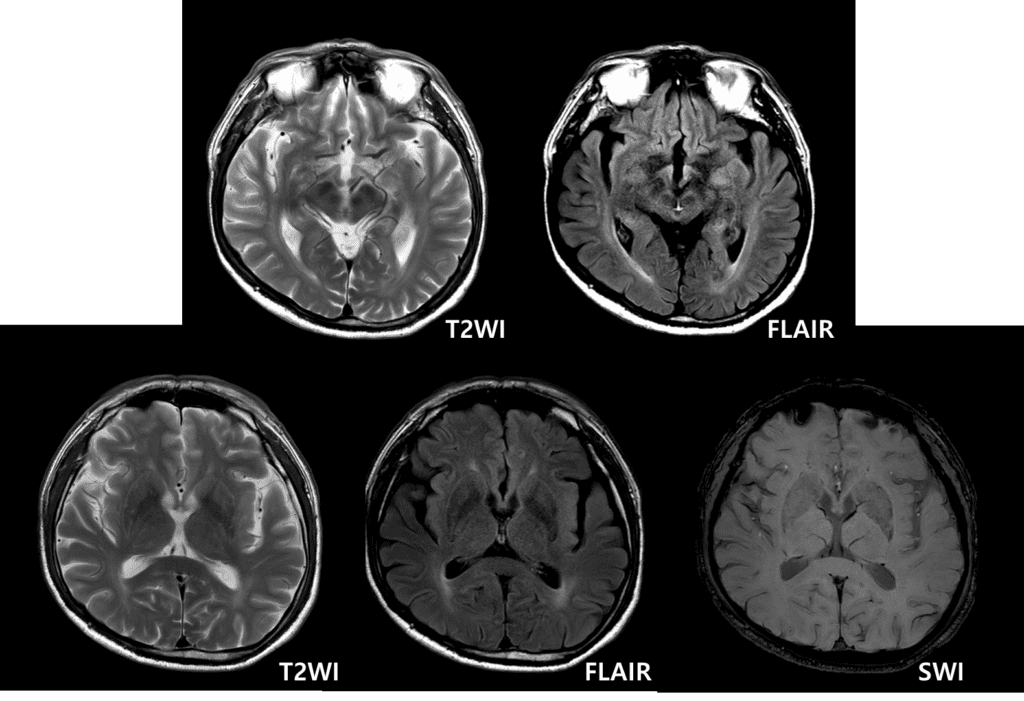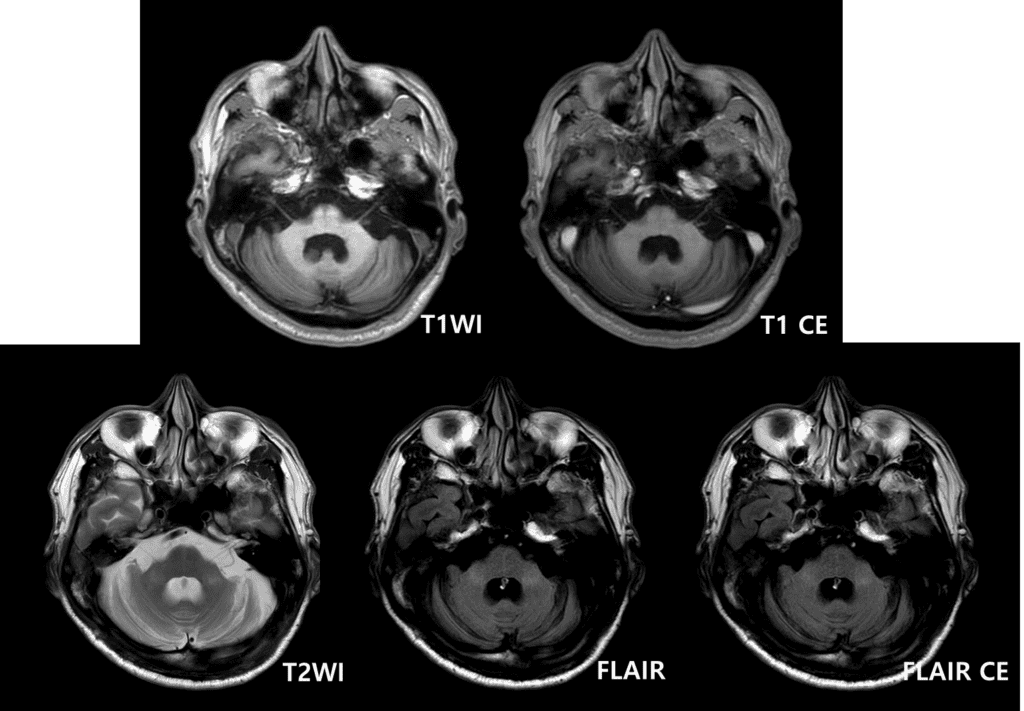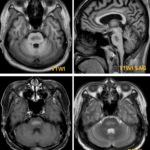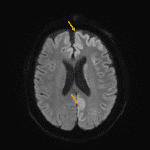Male / 65 , Chief complaint : bradykinesia, gait disturbance (onset : 10MA)


Multiple system atrophy (MSA)
- Adult onset fatal neurodegenerative disease, unknown etiology
- Various degrees of cerebellar ataxia, autonomic dysfunction, parkinsonism, and corticospinal dysfunction (Parkinson-like feature in 85-90%)
- No effective treatment (nonresponsive to L-dopa)
Three clinical subtypes of MSA
- Extrapyramidal (MSA-P) (60%) : Striatonigral degeneration (SND) – parkinsonian symptoms are main
- Cerebellar (MSA-C) (32%) : Sporadic olivopontocerebellar atrophy (sOPCA) – cerebellar symptoms are main
- Autonomic (MSA-A) (less than 5%) : Shy-Drager syndrome (SDS) – autonomic failure
Most paitents expire in 10 years after diagnosis
Reference)
J Mov Disord. 2018 Sep; 11(3): 107–120. 2018 Aug 9. doi: 10.14802/jmd.18020
Ann Indian Acad Neurol. 2008 Oct-Dec; 11(4): 257–258. doi: 10.4103/0972-2327.44565



